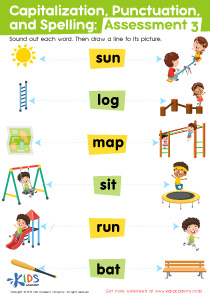Punctuation Worksheets for Ages 4-9
23 filtered results
-
From - To
Discover our engaging Punctuation Worksheets designed for children ages 4-9, aimed at making learning punctuation fun and easy. Our expertly crafted worksheets cover essential punctuation marks such as periods, question marks, commas, and exclamation points. Through playful activities and exercises, kids will develop their skills in structuring sentences correctly and communicating clearly. Boost your child's writing abilities with our colorful and interactive worksheets, tailored to different skill levels. Ideal for classroom use or homeschooling, these resources motivate young learners to excel in their writing journey. Start enhancing your child's punctuation skills today with our comprehensive collection!
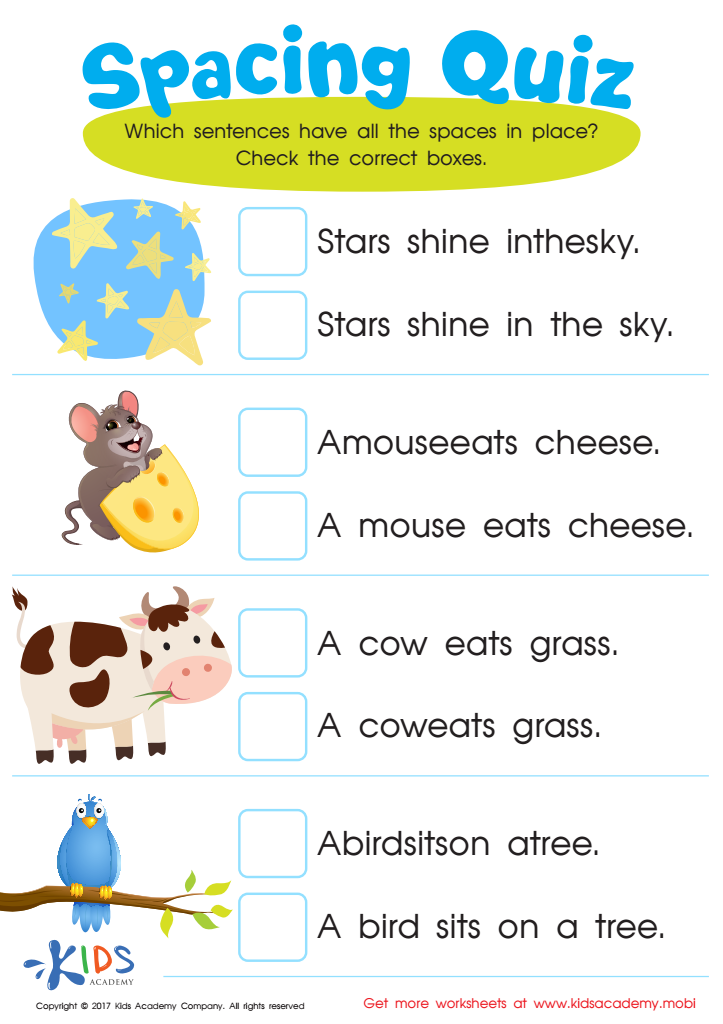

Spacing Quiz Worksheet
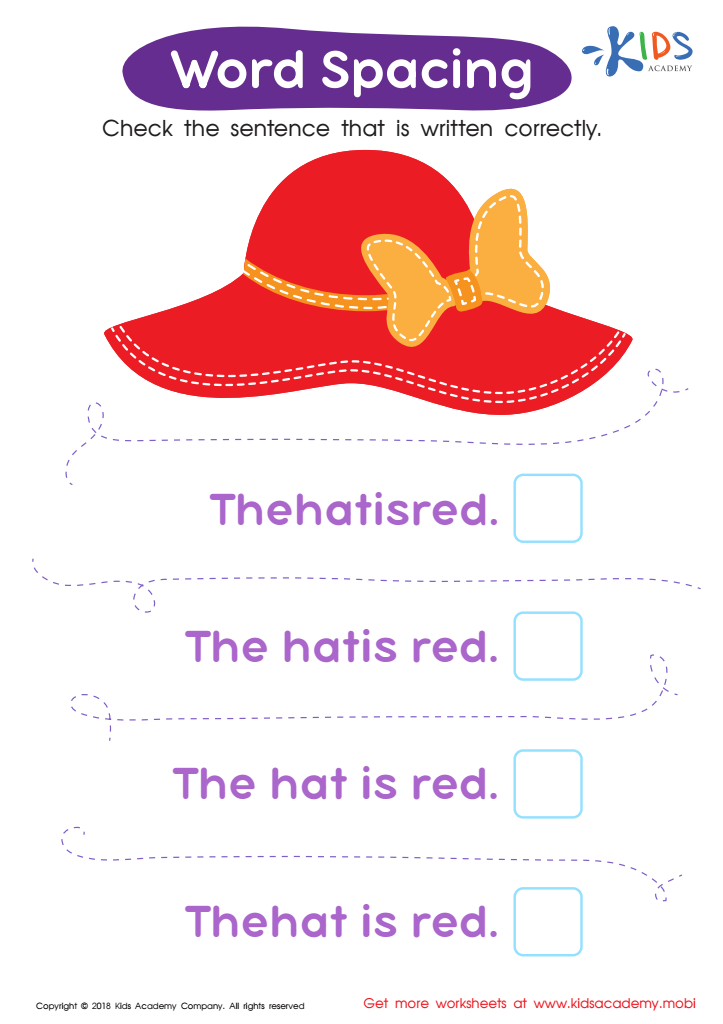

Word Spacing Worksheet
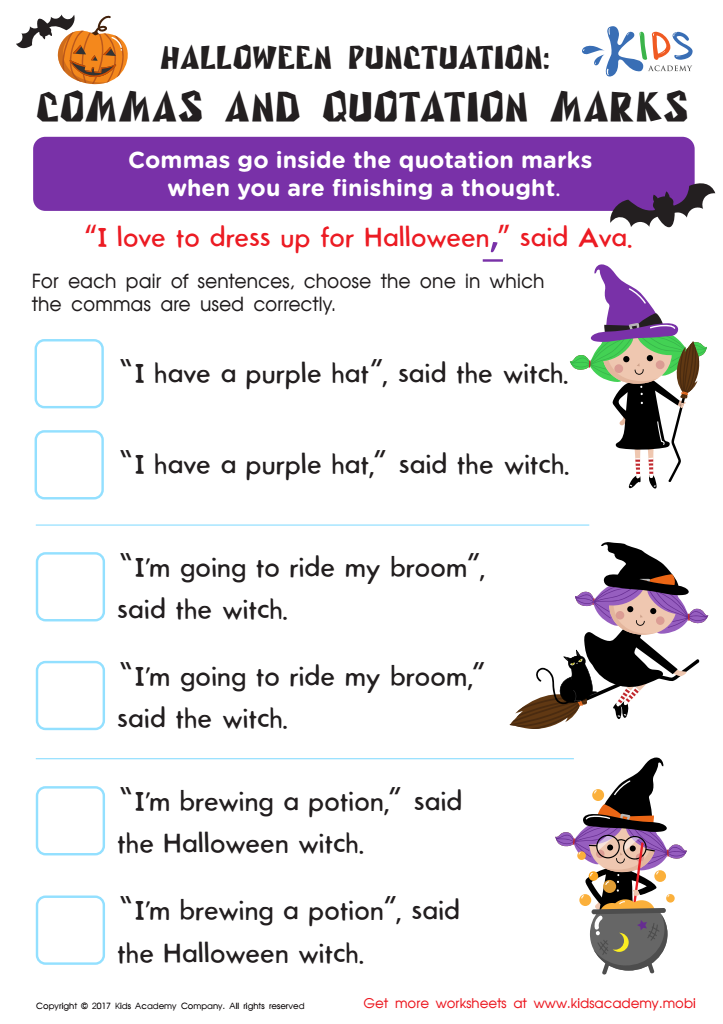

Quotation Marks Worksheet
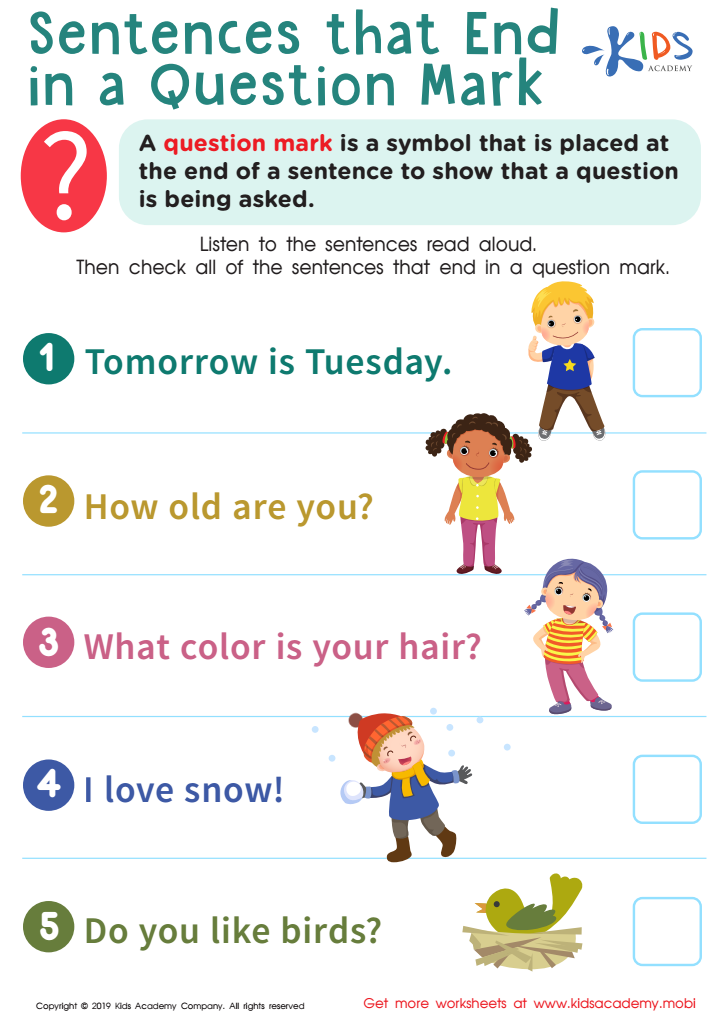

Sentences That End in an Question Mark Worksheet
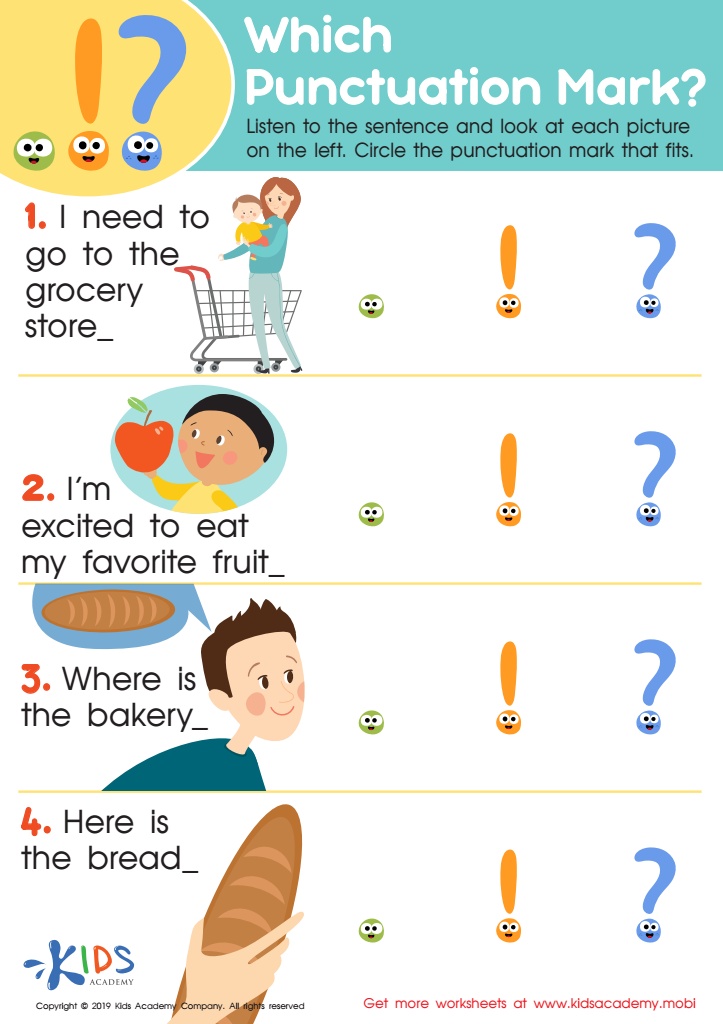

Which Punctuation Mark Worksheet
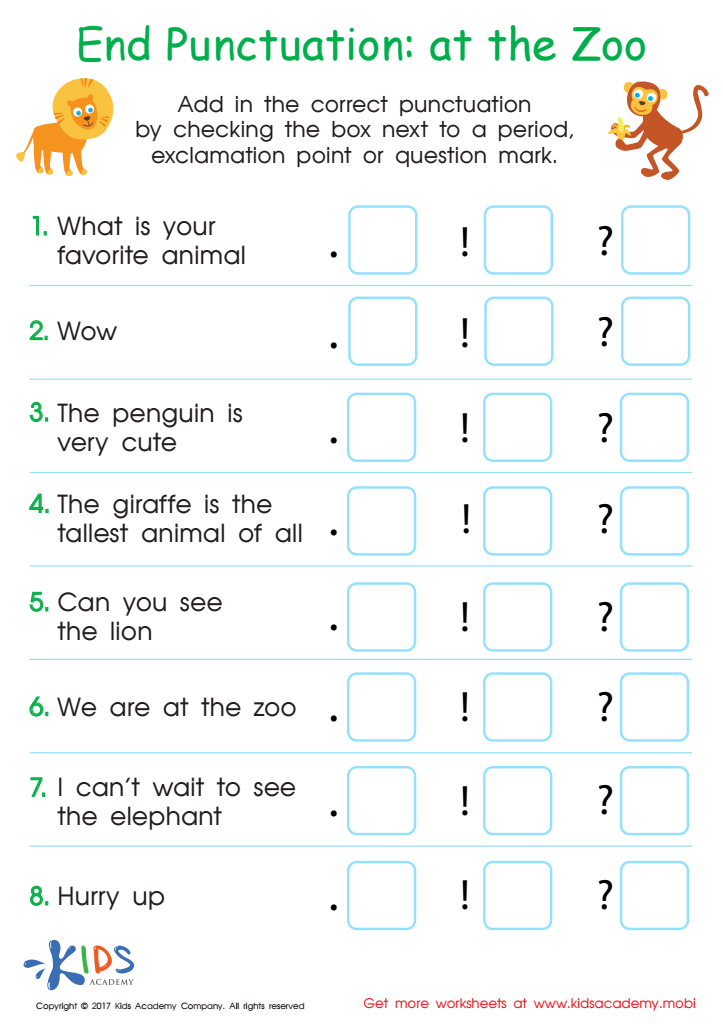

End Punctuation: At the Zoo Worksheet
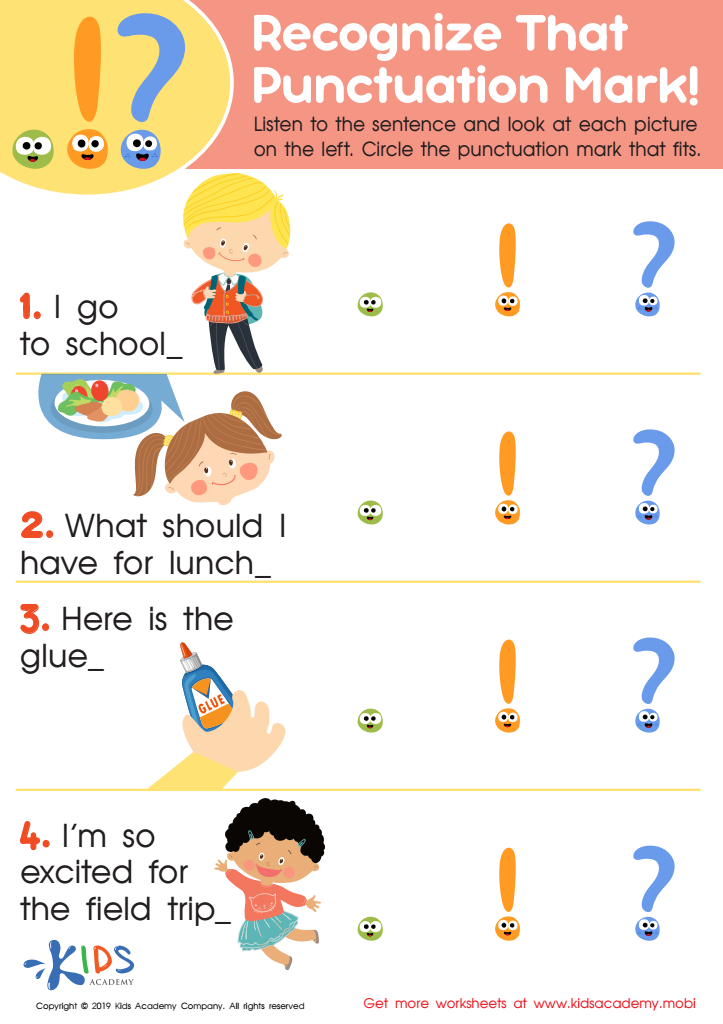

Recognize Punctuation Marks Worksheet
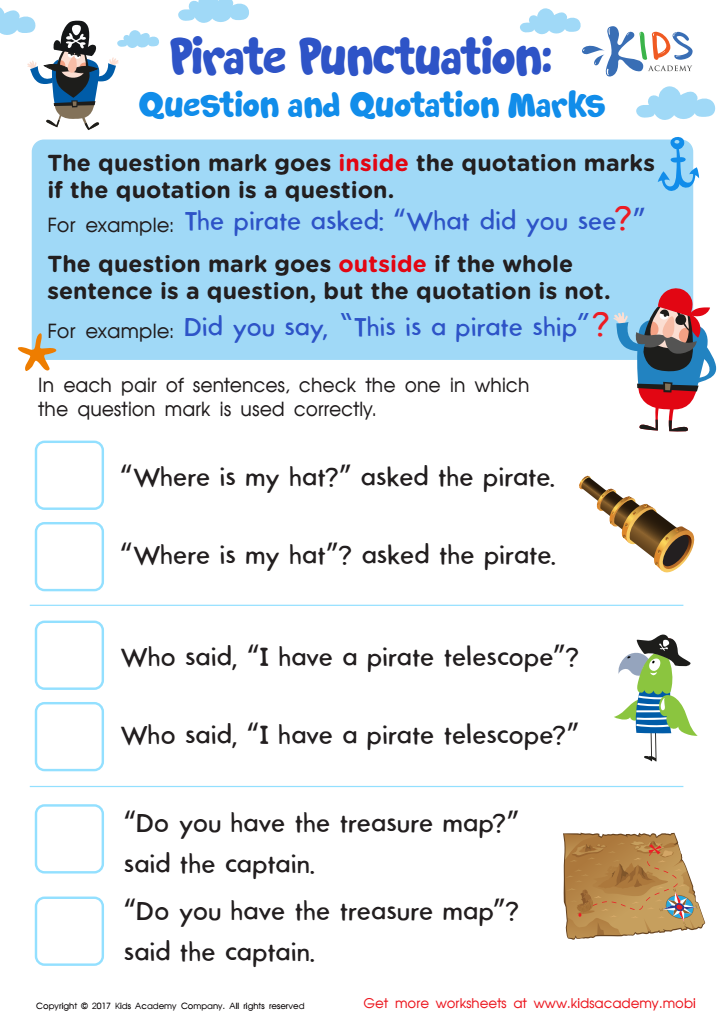

Question and Quotation Marks Worksheet
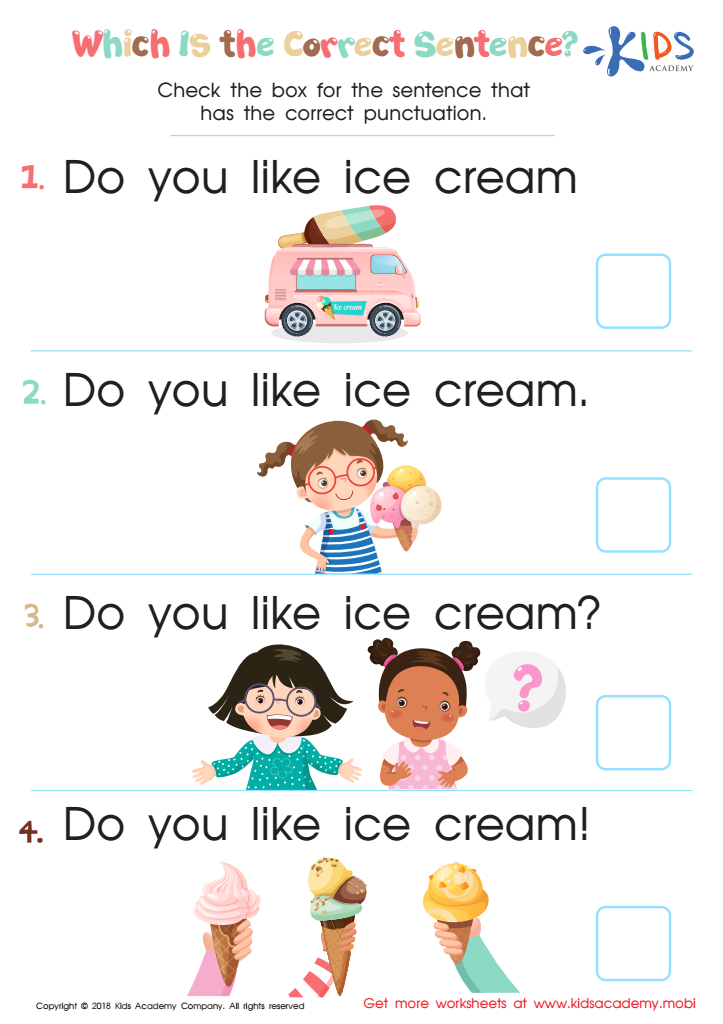

Which is the Correct Sentence? Worksheet
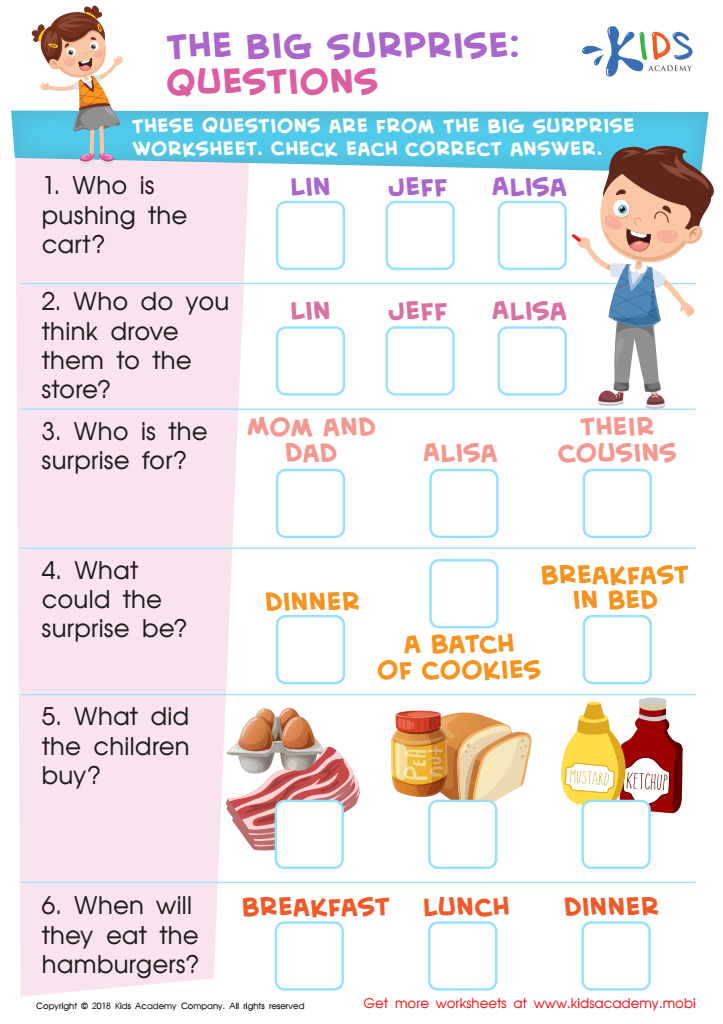

The Big Surprise: Questions Worksheet
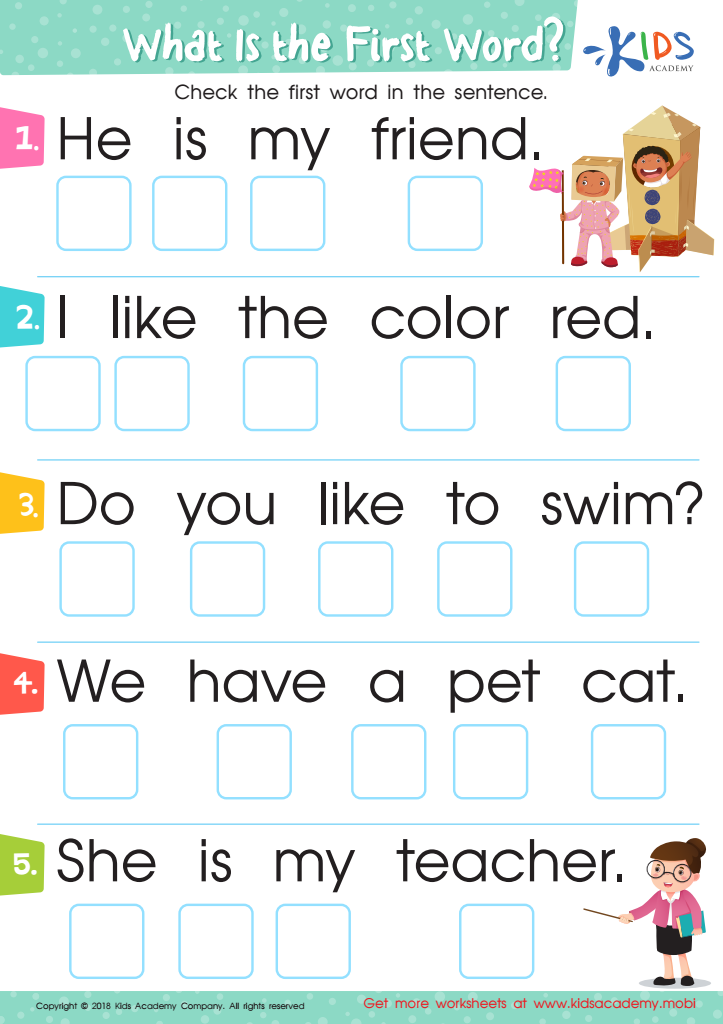

What is the First Word? Worksheet
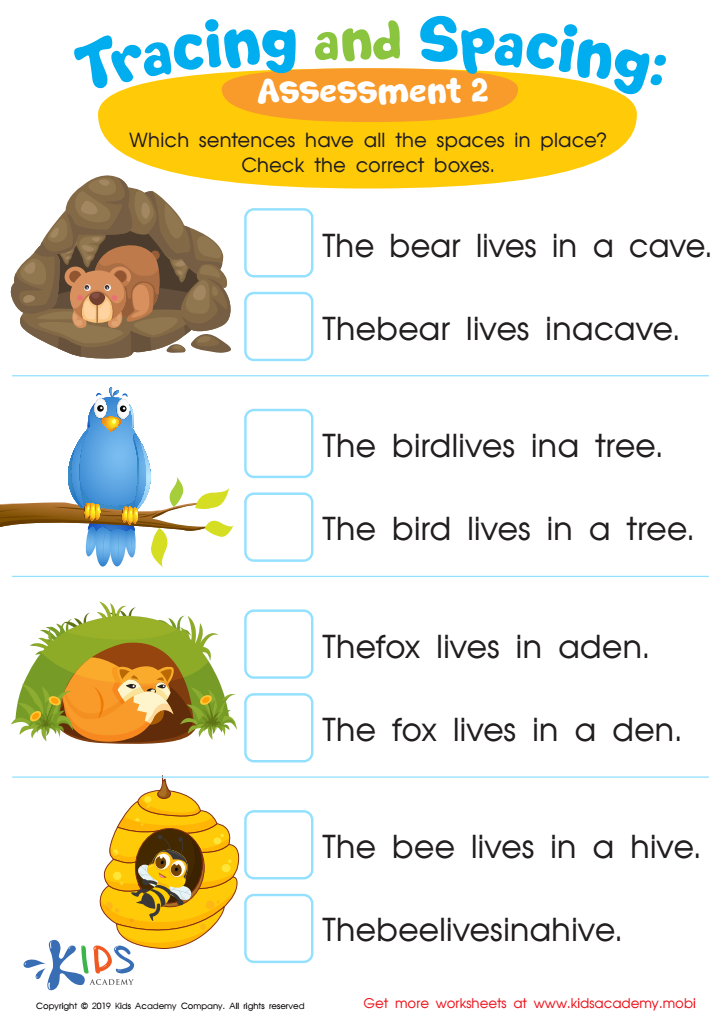

Tracing and Spacing: Assessment 2 Worksheet
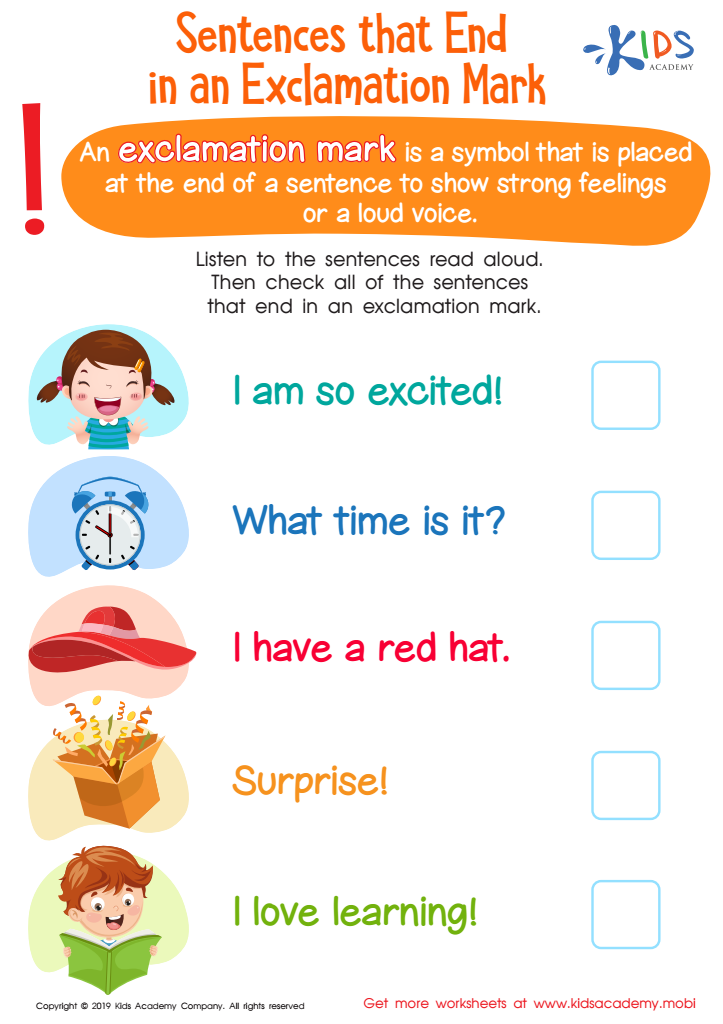

Sentences That End in an Exclamation Mark Worksheet
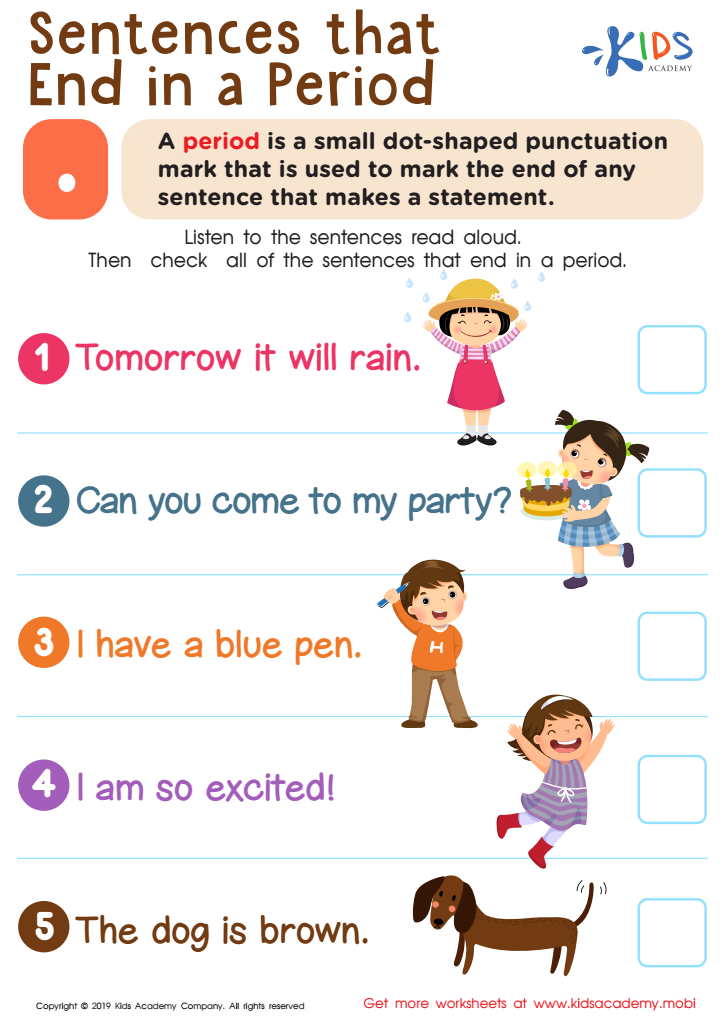

Sentences That End in a Period Worksheet
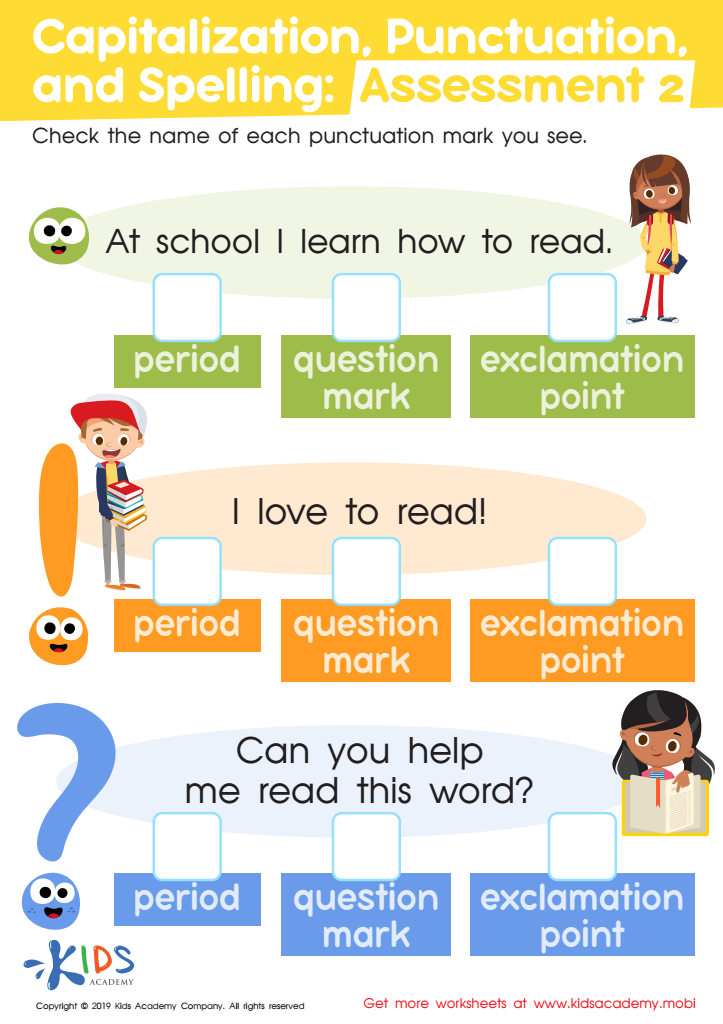

Capitalization. Punctuation. Spelling: Assessment 2 Worksheet


Basic Punctuation: Question or Statement Printable
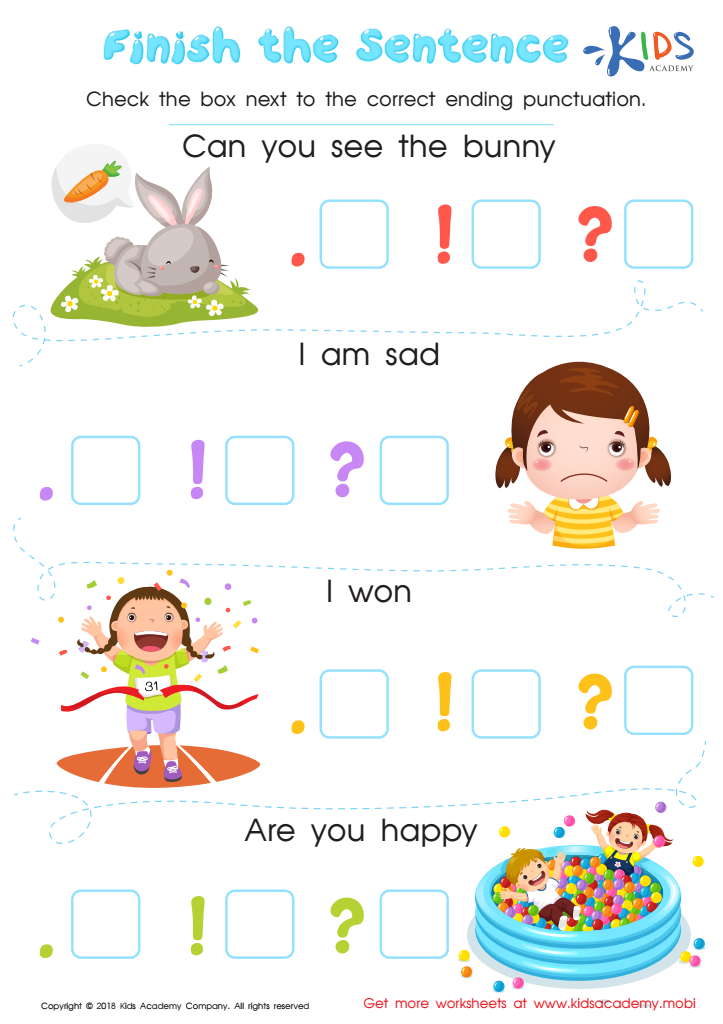

Finish the Sentence Worksheet
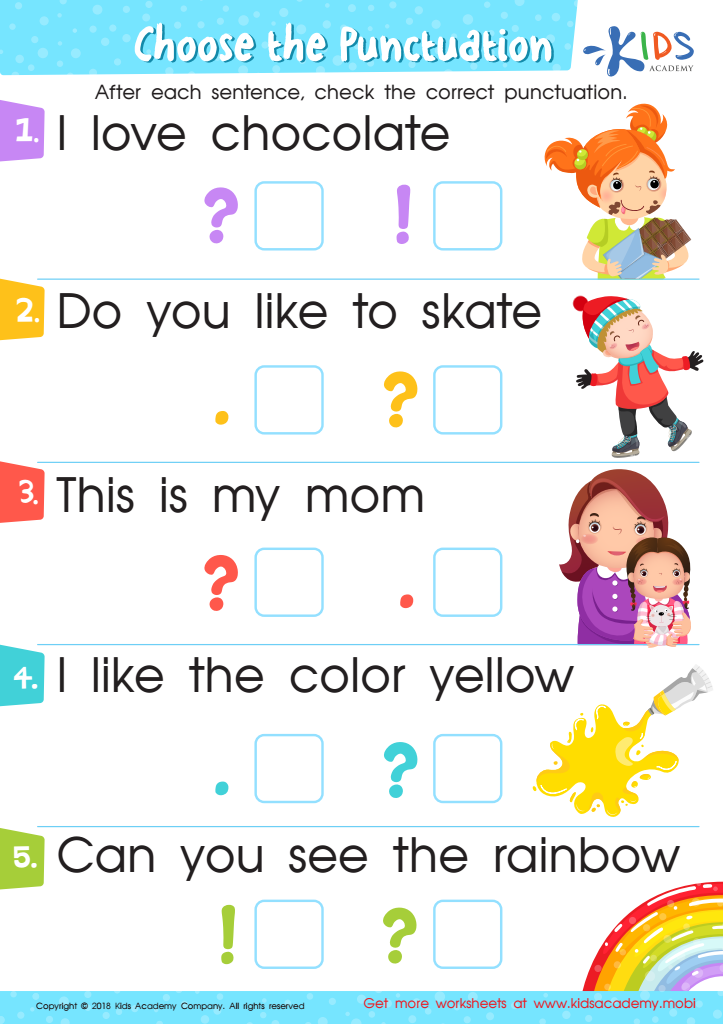

Choose the Punctuation: Assessment Worksheet
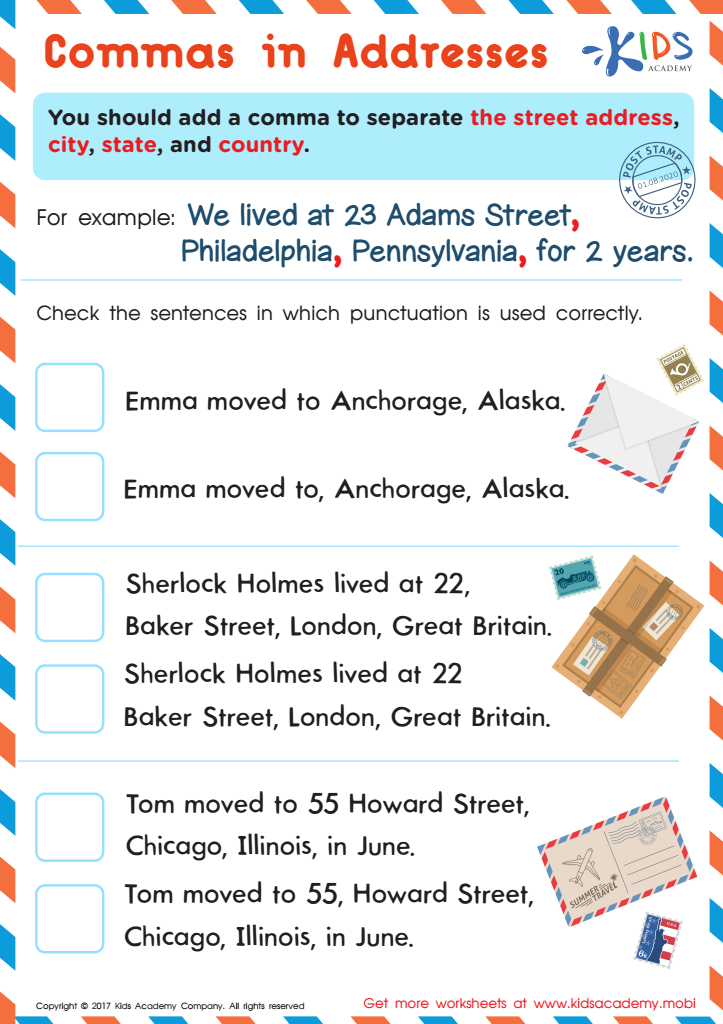

Commas in Addresses Worksheet
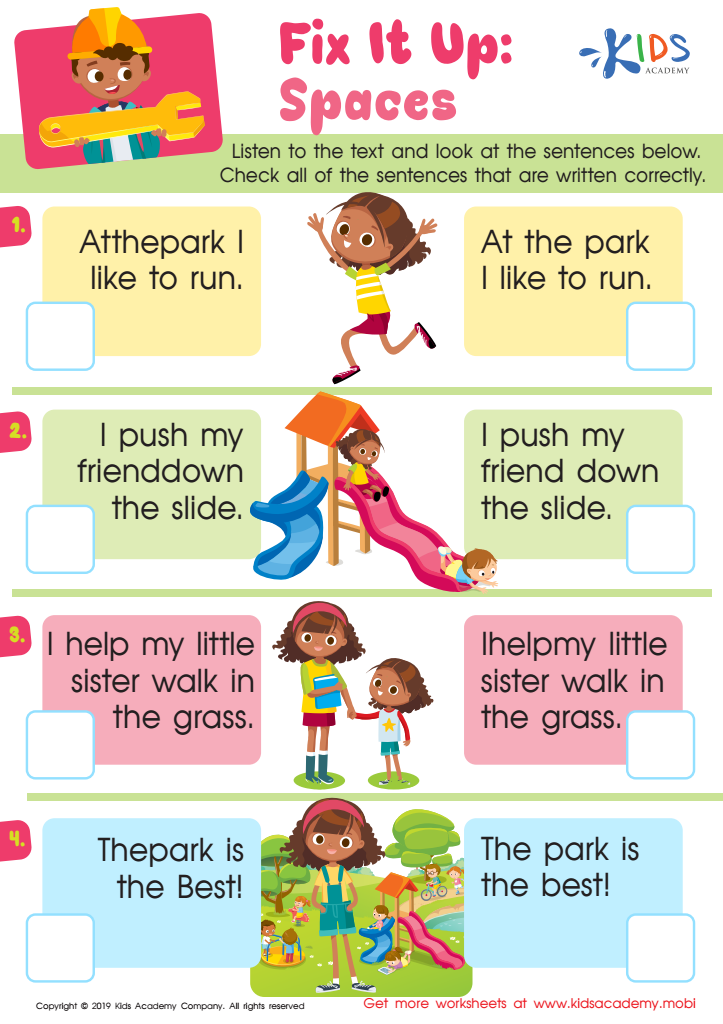

Fix Spaces Worksheet
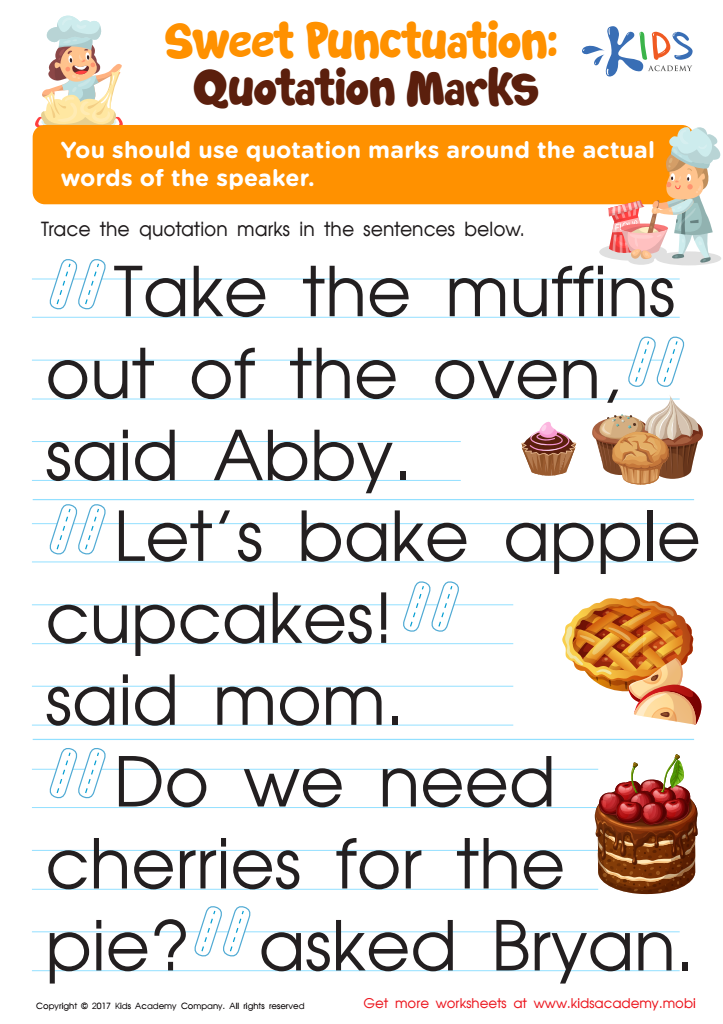

Commas and Quotation Marks Worksheet
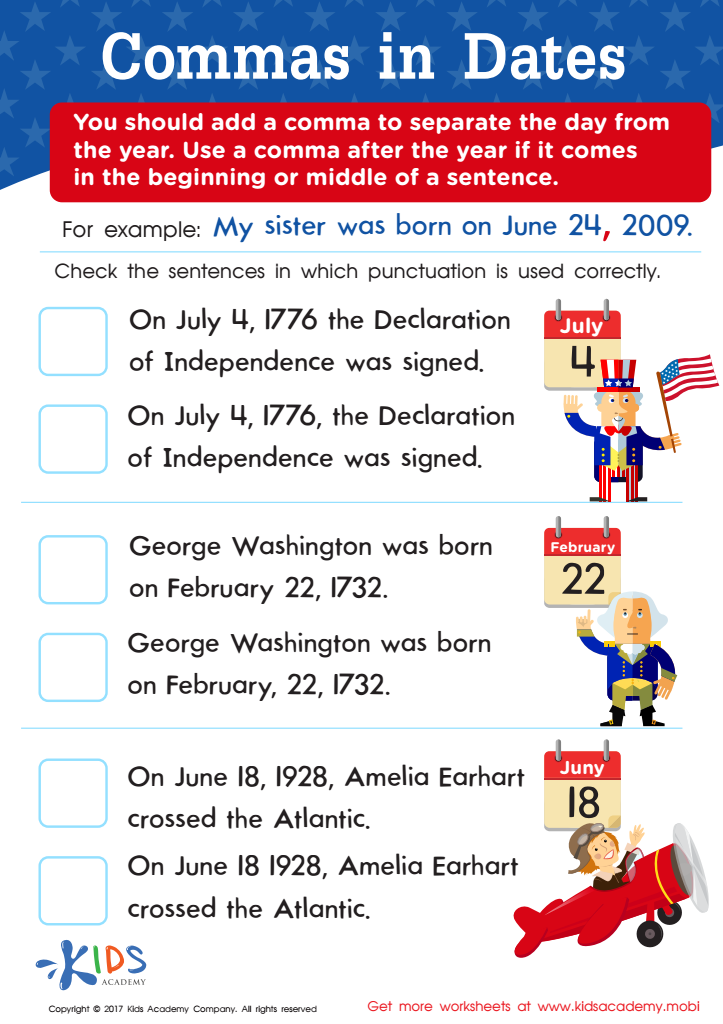

Commas in Dates Worksheet
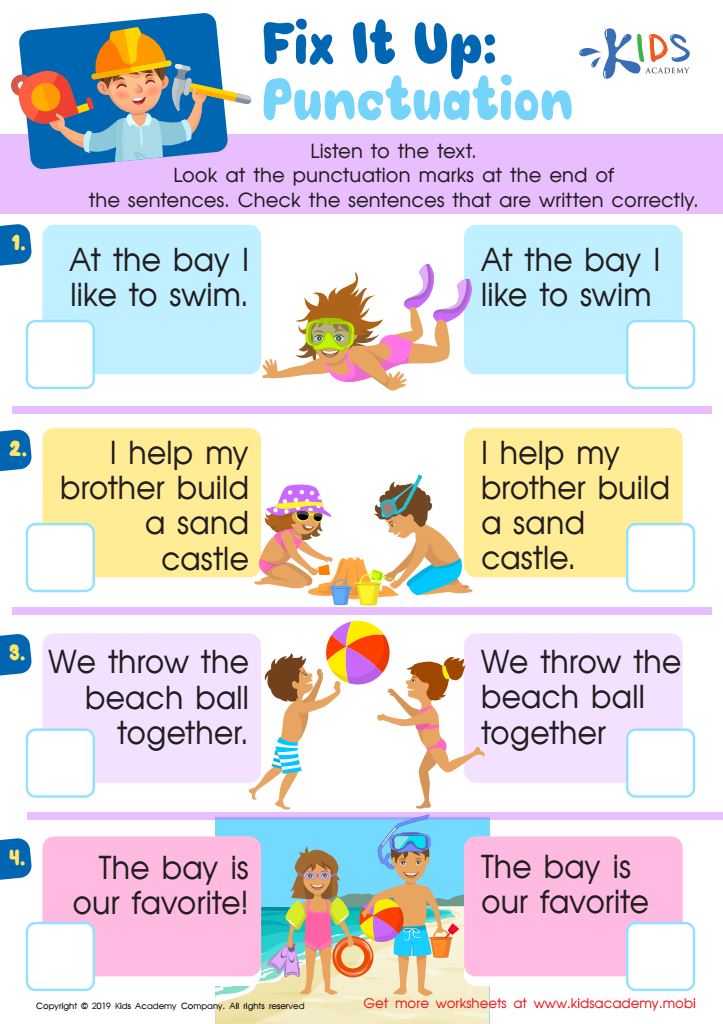

Fix Punctuation Worksheet
Parents and teachers should care about punctuation for children ages 4-9 because it is foundational for their literacy development and communication skills. At this formative stage, children are rapidly acquiring language and reading abilities. Teaching proper punctuation usage helps them understand the structure and meaning within texts.
For example, commas, periods, question marks, and exclamation points are vital for comprehension; they indicate pauses, ends of thoughts, questions, and exclamations respectively. Understanding punctuation helps children read with correct intonation and fluency, improving their overall reading experience and enjoyment. Additionally, proper punctuation aids in their writing clarity, ensuring their thoughts and stories are conveyed as intended.
Early exposure to punctuation rules encourages children to think critically about where sentences begin and end, helping them develop better sentence construction. This skill is crucial not only for academic success but also for everyday communication. Moreover, they lay the groundwork for more advanced grammar skills they will need in later education. By instilling these basics early on, parents and teachers make future learning smoother and more intuitive.
Ultimately, investing in teaching punctuation early is investing in a child’s long-term ability to read, write, and communicate effectively, which are essential skills in both academic and personal contexts.
 Assign to My Students
Assign to My Students








